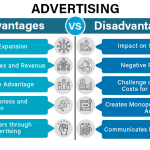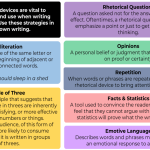Understanding the History: How was Advertising Created?
The inception of advertising can basically be categorized into three major eras: pre-printing, mass media, and the internet age. But, how exactly was advertising created? This quest takes us back to ancient civilizations.
The Epoch of Pre-Printing
The legacy of advertising dates back to ancient civilizations. For instance, the Ancient Egyptians employed papyrus for sales messages and promotional material. Research reveals that outdoor displays, a vital tool of modern-day advertisers, were used in Ancient Rome and Pompeii. In ancient China, the earliest form of advertising was through oral communication in the form of ‘Bianwen’ or ‘storytelling’.
The Mass Media Revolution
The invention of the Gutenberg printing press in the 15th century acted as a catalyst for the evolution of advertising. By the 17th century there were broadsides or posters selling items, and in the 18th century, newspapers began carrying advertisements. The 19th century saw even more growth with the explosion of various forms of printed advertising such as flyers, brochures and billboards.
The Digital Leap and Internet Age
The 20th century brought a new era of advertising, with the advent of radio broadcasting, followed swiftly by television. However, it was the arrival of the Internet in the late 20th century that truly revolutionized advertising. This platform allowed for widespread, instant dissemination of adverts on an unprecedented scale, giving rise to what we today know as digital advertising.
The First Forms of Advertising: A Deeper Look into their Creation
The birth of advertising wasn’t coined with the advent of modern technology. In fact, advertising seems always to have been an intrinsic part of human communication. Are you aware of the first forms of advertising? Let’s delve into the topic.
 Exploring the Pros and Cons: Advantages and Disadvantages of Advertising
Exploring the Pros and Cons: Advantages and Disadvantages of AdvertisingThe Origin of Advertising
The first rudimentary forms of advertising can be traced back to ancient civilizations. It started with simple methods such as etching on steel tablets and elaborated papyrus scrolls. The Romans implemented advertising using papyrus, while ancient Egyptians employed bas-reliefs for conveying message related to their trade goods.
The Evolution of Advertising Techniques
With time, advertising strategies evolved, shifting from rock paintings to oral advertisements during the Middle Ages. Town criers were widely used to disseminate news about goods and services in public spaces. Surprisingly, these first advertising techniques demonstrate some striking similarities to modern digital advertising.
The Advent of Print Advertising
It wasn’t until the advent of the printing press in the 15th century that advertising witnessed another significant transformation. These initial print advertising materials consisted mainly of handbills and flyers, which later involved into newspaper advertising, marking a major step towards modern advertising strategies.
Noteworthy Advances in the Advertising Industry
In the blazing-fast world of technology, the advertising industry continues to evolve and transform. This constant shift is significantly driven by noteworthy advances in technology and consumer behavior, poised to reshape the industry landscape.
Digital Advertising
Digital advertising, an integral part of this revolution, has emerged as an efficient platform offering businesses diverse ways to reach consumers. With the advent of programmatic advertising, advertisers now have automated means to make data-driven decisions about where and when to run their ads. In addition, the widespread use of tracking pixels is leading to efficient remarketing strategies, thus increasing the chances of conversion.
 Exploring the Pros and Cons: Advantages and Disadvantages of Advertising
Exploring the Pros and Cons: Advantages and Disadvantages of Advertising Essential Characteristics an Effective Advertisement Should Have: Comprehensive Guide
Essential Characteristics an Effective Advertisement Should Have: Comprehensive GuideUse of AI and Machine learning
Another ground-breaking development is the incorporation of Artificial Intelligence (AI) and Machine Learning in advertising. AI-driven tools are helping businesses to fine-tune their advertising strategies by predicting consumer behavior, thus enhancing targeted advertising. On the other hand, machine learning algorithms are making media buying automated, precise, and efficient.
Social Media Advertising
Perhaps one of the most enticing advances is the rise of social media advertising. Social media platforms are now seen as lucrative mediums for advertisers due to their global reach and the ability to target ads to specific demographic groups. Businesses are leveraging influencer marketing, sponsored posts, and native advertising to drive consumer engagement and brand recognition.
Innovations that Revolutionized Advertising: A Timeline
The domain of advertising is dynamic and ever-evolving. A deep dive into its milestones unveil a variety of innovations that have transformed it remarkably. Let’s take a glance at some such major upheavals in the world of advertising.
Print Advertisements: The Genesis
The journey of advertising began with the advent of print advertisements in the 1700s. These were primarily in the form of posters, handbills, and newspapers. Despite their rudimentary nature, they managed to engage audiences effectively and marked the genesis of advertising.
Radio Advertising: The Audio Breakthrough
With the invention of the radio in the early 1900s, radio advertising took the world by storm. It became a powerful medium to reach out to people on a large scale, offering a novel audio experience. Advertisers leveraged this platform to establish an effective and direct communication channel with consumers.
 Exploring the Pros and Cons: Advantages and Disadvantages of Advertising
Exploring the Pros and Cons: Advantages and Disadvantages of Advertising Essential Characteristics an Effective Advertisement Should Have: Comprehensive Guide
Essential Characteristics an Effective Advertisement Should Have: Comprehensive Guide Understanding the Basics: What is Advertising and its Crucial Role in Business Success
Understanding the Basics: What is Advertising and its Crucial Role in Business SuccessTelevision and Internet Advertising: Visual Revolution
The true revolution in the industry, however, came about with the advent of television and internet advertising. Television ads combined the power of visuals and sound, creating an immersive experience. Internet advertising transformed the advertising landscape, allowing ads to be highly interactive, targeted, and personalised.
Emergence of Social Media and Mobile Advertising
In the digital age, social media and mobile advertising have become a game-changer. These platforms offer the ability to engage audiences directly, with highly targeted messaging. This level of personalisation offers unparalleled opportunities for brands to connect with consumers, and has revolutionized the advertising industry.
How the Creation of Advertising Shaped Modern Marketing
The birth of advertising was a dramatic gamechanger in the realm of marketing. No longer did businesses have to rely solely upon word of mouth or one-on-one meetings. With advertising, they could cast a much wider net and reach countless potential customers.
Advertising has not only allowed businesses to reach more people, but it also prompted the development of branding. Branding gave businesses their identity and voice, helping them differentiate from competitors.
The Role of Technology in Advertising
With advances in technology, advertising has significantly evolved. The advent of new tools and platforms, including television, radio, and more recently, digital media, have exponentially magnified the reach and impact of advertising. These leaps forward in technology enabled more sophisticated advertising tactics, leading to the modern marketing strategies used today.
 Exploring the Pros and Cons: Advantages and Disadvantages of Advertising
Exploring the Pros and Cons: Advantages and Disadvantages of Advertising Essential Characteristics an Effective Advertisement Should Have: Comprehensive Guide
Essential Characteristics an Effective Advertisement Should Have: Comprehensive Guide Understanding the Basics: What is Advertising and its Crucial Role in Business Success
Understanding the Basics: What is Advertising and its Crucial Role in Business Success Exploring Different Types: Comprehensive Guide to What Types of Advertising Exist
Exploring Different Types: Comprehensive Guide to What Types of Advertising ExistThe Evolution of Advertising Strategies
Advertising’s progression didn’t stop with technological advancement; adaptation of strategies also played a significant role. The shift from product-centered to customer-centered advertising demonstrated a significant evolution in the philosophy surrounding marketing. This shift empowered consumers and turned the focus on meeting their needs and desires.
